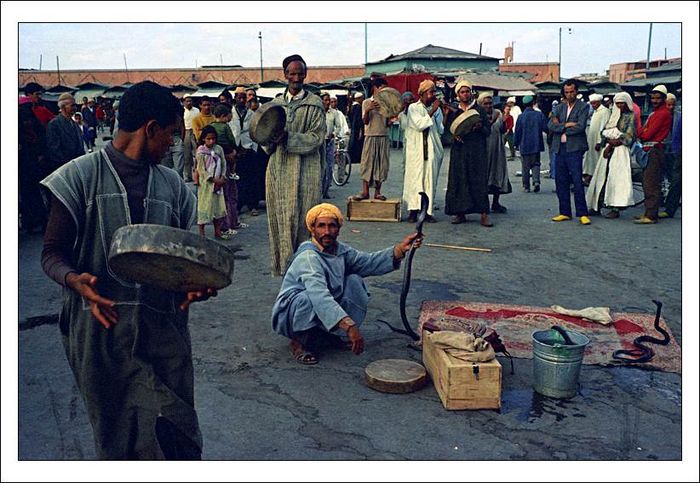p.giannakis
Pan Giannakis
As some of you know, i have spent some time this year sorting out my slides and colour negative pictures from the 90's-early 2000s. One thing that is obvious is that after those 25-30 years colours start fading.
Slides are not too bad. They are mostly Kodak Ektachrome 100 but there are some 200 also and some Fuji Velvia 50 and Fuji Sensia. The Ektachrome 200 appear to show some colour shift but nothing too bad.
On the other hand, colour negative is atrocious. I have kept them all in negative sleeves and weather in Athens is quite dry so there is no mould or anything. Out of them, Kodak Ektar 100 has done well overall and Gold 100 is salvagable but other negatives like Kodak VR100, Fuji Reala, Kodak Gold 200 or Agfacolour Optima show colour shifts or colour hue that barely make them usuable any more; i need a lot of time of editing on GIMP to make them look presentable (although sometimes damage is beyond repair).

This taken with Ektar 100 - Ektar shows usually a shift from blue to green - skies look slightly green but easy to correct. This picture is taken in Aug 1994 - exactly 30 years ago.

This taken with a Kodak VR100. Pretty much unusuable. Taken in June 1997.
I am thinking about the people currently shooting colour negative and what they might find out in 20 years. But is there a reason for some films to do better than others? ISO speed? Developing process?
Any ideas?
Slides are not too bad. They are mostly Kodak Ektachrome 100 but there are some 200 also and some Fuji Velvia 50 and Fuji Sensia. The Ektachrome 200 appear to show some colour shift but nothing too bad.
On the other hand, colour negative is atrocious. I have kept them all in negative sleeves and weather in Athens is quite dry so there is no mould or anything. Out of them, Kodak Ektar 100 has done well overall and Gold 100 is salvagable but other negatives like Kodak VR100, Fuji Reala, Kodak Gold 200 or Agfacolour Optima show colour shifts or colour hue that barely make them usuable any more; i need a lot of time of editing on GIMP to make them look presentable (although sometimes damage is beyond repair).

This taken with Ektar 100 - Ektar shows usually a shift from blue to green - skies look slightly green but easy to correct. This picture is taken in Aug 1994 - exactly 30 years ago.

This taken with a Kodak VR100. Pretty much unusuable. Taken in June 1997.
I am thinking about the people currently shooting colour negative and what they might find out in 20 years. But is there a reason for some films to do better than others? ISO speed? Developing process?
Any ideas?








